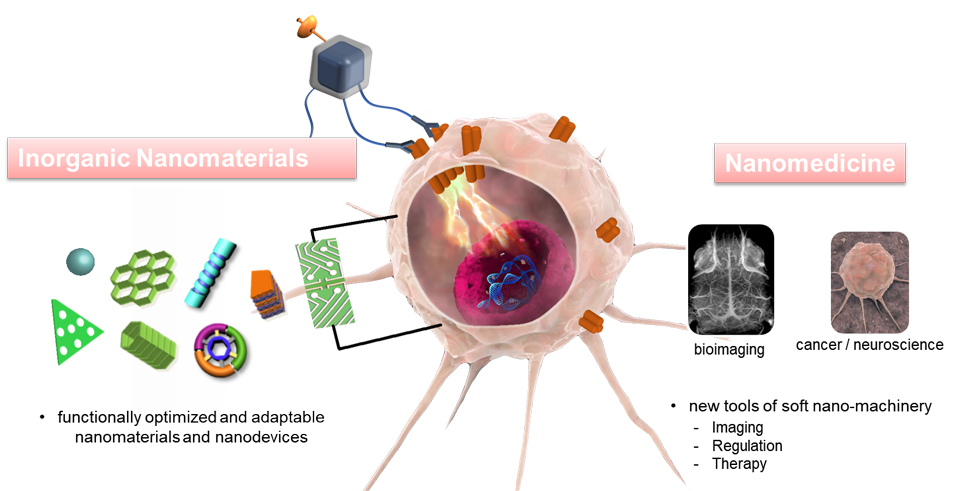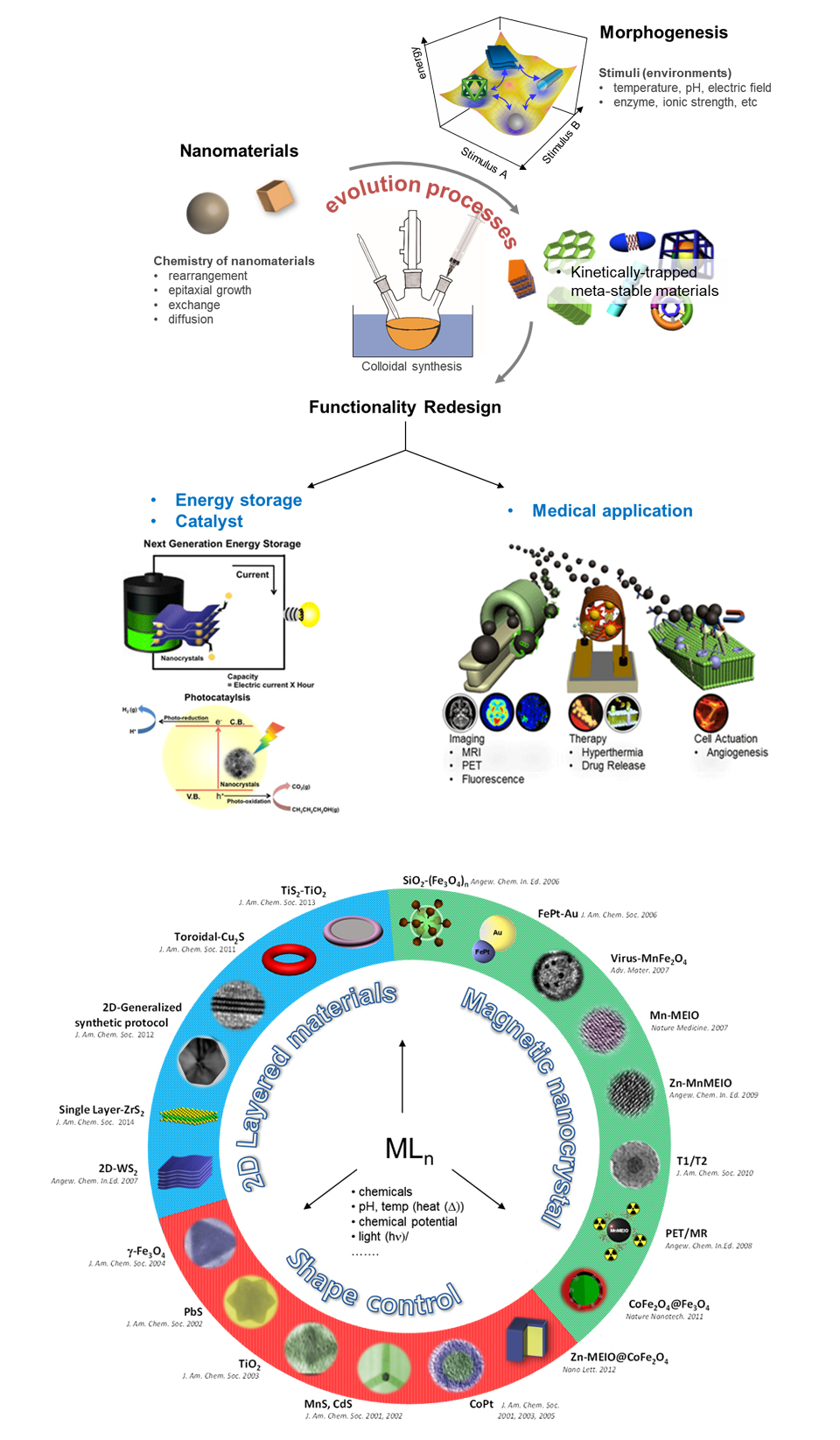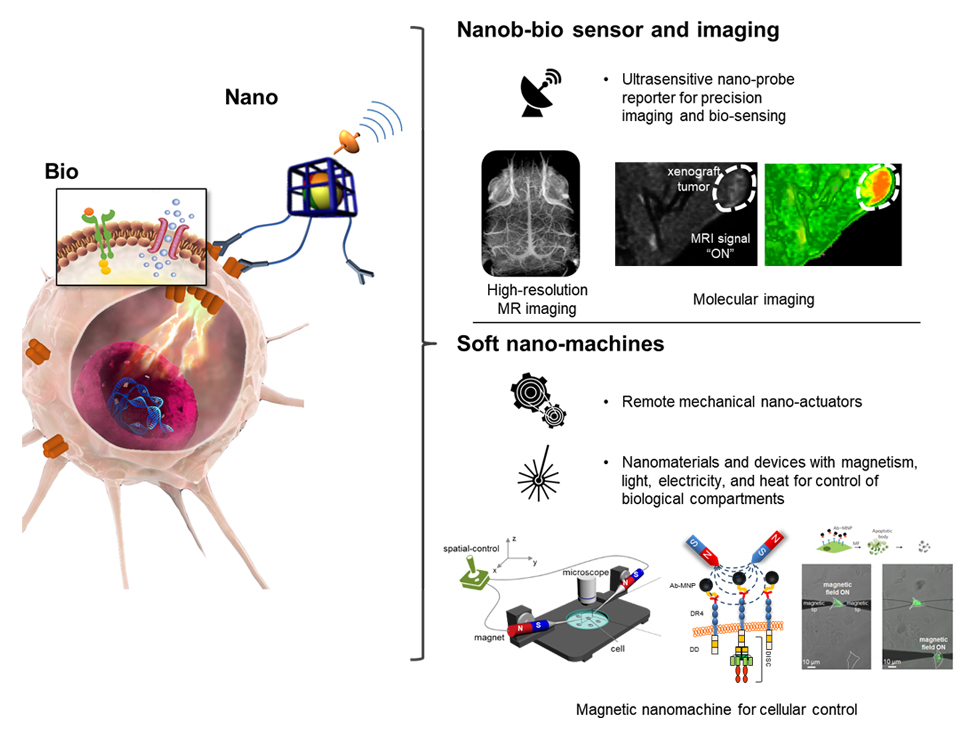Main Links
Logo and Main Menu
Full Menu
Research Areas of Our Group

The purpose of our research is to develop evolutionary nanomaterials with enhanced and combined properties. Those evolutionary nanoparticles can be used in nano-bio interface as a novel tool to find new discoveries in biology. Moreover, they can provide novel approaches for imaging probes and therapy in current medicine.
Inorganic Nanomaterials

The main purpose is to develop futuristic inorganic nanoparticle which has a totally new design concept. In contrast to the previously reported nanoparticles mainly fabricated by trial and error or by serendipity, our nanoparticle, called as "evolutionary" nanoparticle, is constructed by the systematic and rational design which makes it to be susceptible to the outer environment or stimulation so that it can be transformed into new shape and structure. The resulting nanoparticle exhibits excellent performance in energy storage or catalytic activity compared to other previously reported materials. Moreover the nanoparticles can be used in medical application for imaging or cancer therapy. In order to examine the various properties of these evolutionary nanoparticles, we have basic equipments such as ARM, TEM, SEM, VSM, XRD, ICP, TGA, NMR, FT-IR, and AFM.
Nanomedicine

In the Nanomedicine group, researchers have focused on developing novel nanomaterials with specific function such as imaging agents or therapeutic agents. Due to the property of transformation of nanomaterials, they can change external physical stimulation to another form of stimulation such as magnetism, mechanical force or thermal energy. Simultaneously, in order to apply those nanomaterials in in vivo systems, researchers have developed diverse strategies to evade immune defense system in our body and minimize unwanted side effects. In order to examine the biodistribution and effects of nanomaterials in biological systems, we have our own animal facility for in vivo effect of those nanomaterials. We also have essential equipments such as MRI, optical microscope (confocal, TIRF, etc.), magnetic hyperthermia, FACS, HPLC, FPLC, DLS, and PL.
Copyright and Address
- Cheon Group
- |
- Privacy Policy
- ADDRESS Department of Chemistry. 50 Yonsei-ro, Seodaemun-gu, Seoul 03722
- TEL +82-2-2123-4769
- FAX +82-2-2123-4640
- EMAIL lee7626@yonsei.ac.kr
- © Cheon Group | Yonsei University. All Right Reserved
